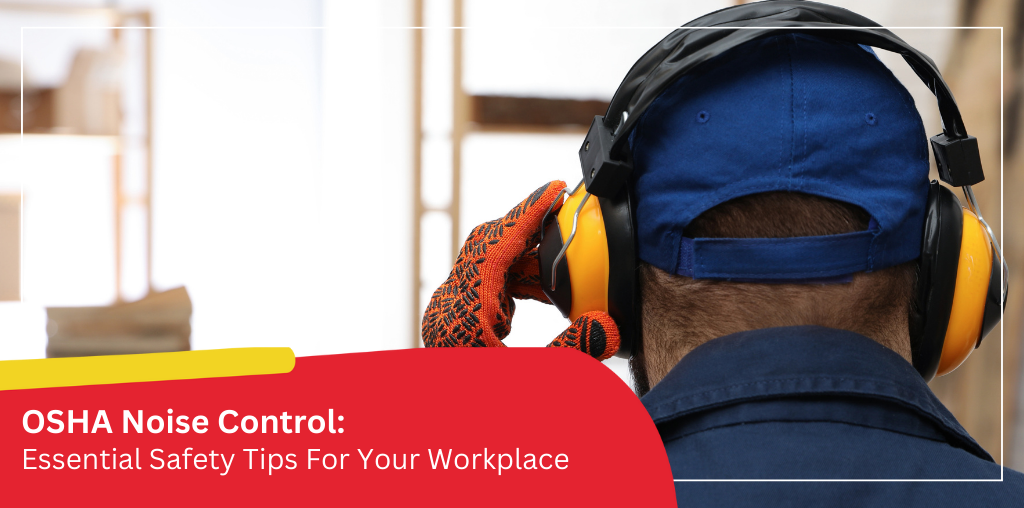OSHA Noise Control: Essential Safety Tips For Your Workplace
- October 16, 2023
- Posted by: thinkjcw
- Categories: OSHA, Safety, Video

OSHA Noise Control Overview
OSHA, the Occupational Safety and Health Administration, serves as a federal agency in charge of ensuring safe and healthy working conditions for employees in the United States. One of OSHA’s primary areas of focus revolves around the control of workplace noise. Excessive noise exposure in the workplace can result in permanent hearing loss, underscoring the critical importance of OSHA Noise Control measures.
Permissible Exposure Limits (PEL)
OSHA has set permissible exposure limits (PELs) for workplace noise. The PEL for noise exposure is 90 decibels (dBA) over an eight-hour time-weighted average. When noise levels reach or exceed 85 dB for an eight-hour day, OSHA mandates employers to establish a hearing conservation program. This program encompasses noise monitoring, audiometric testing, and noise control strategies.
Noise Monitoring
Employers must conduct a noise exposure assessment utilizing sound level meters or dosimeters to determine whether employees face noise levels at or exceeding 85 decibels (dBA) during an eight-hour workday. They should employ these assessment results to identify at-risk employees and develop suitable measures to reduce noise exposure.
Audiometric Testing
Employers must perform baseline audiometric testing upon hiring and subsequent annual audiometric tests to employees exposed to noise levels at or exceeding 85 dBA over an eight-hour workday. Audiograms not only assess hearing levels but also track employees’ hearing abilities over time, identifying potential hearing damage.
Noise Control Measures
Noise control measures play a pivotal role in mitigating the risk of hearing loss in the workplace, falling into two categories: engineering controls, and administrative controls.
Engineering Controls
Engineering controls encompass physical modifications to the workplace aimed at reducing noise levels, including:
- Installation of sound barriers: Adding walls or partitions to separate noise sources from the rest of the workspace.
- Enclosures: Housing machinery or equipment in soundproof materials to reduce noise.
- Machine maintenance: Ensuring regular maintenance to reduce noise by maintaining machinery in optimal working condition.
- Silencers: Integrating mufflers or silencers into exhaust systems to diminish noise levels.
Administrative Controls
Administrative controls introduce alterations in work practices or policies to decrease noise exposure, such as:
- Job rotation: Rotating workers to minimize their exposure to noise.
- Work schedule adjustments: Modifying schedules to reduce the time employees spend in noisy areas.
- Training: Providing workers with training on the risks of noise exposure and ways to mitigate it.
- Signage: Posting signs to remind employees to wear hearing protection or to identify noisy areas.
- Personal Protective Equipment (PPE): PPE represents the last line of defense against noise exposure and includes:
- Earplugs: These fit into the ear canal, reducing noise levels by blocking sound waves.
- Earmuffs: Covering the entire ear, earmuffs reduce noise levels by creating a seal around the ear.
- Custom earplugs: Molded to fit the ear canal’s shape, these offer maximum protection.
Prioritize Workplace Safety with Noise Control
In conclusion, OSHA noise control regulations constitute an indispensable facet of workplace safety. Employers must proactively take measures to shield their employees from the detrimental effects of excessive noise exposure. Additionally, non-compliance with these standards can result in penalties and fines for employers. By implementing effective noise control measures, employers can cultivate a safer and healthier work environment for their employees.
If you wish to establish noise control programs for your business or assess your current noise management practices, please do not hesitate to contact us or call our team at (225) 313-4448 for expert guidance.